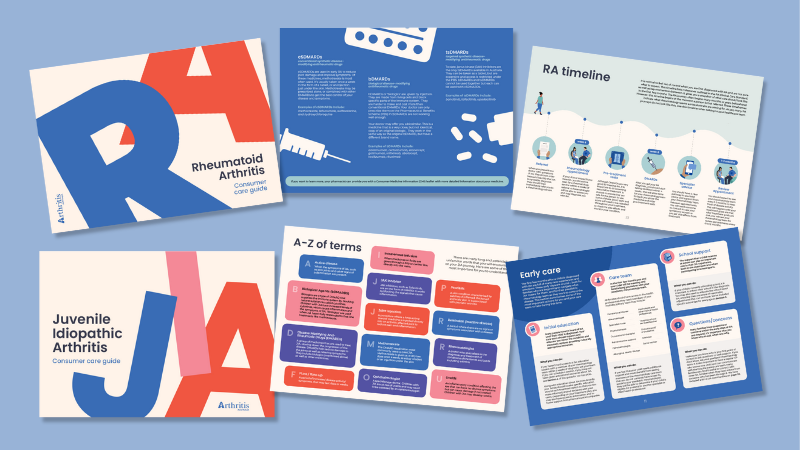Glucocorticoids/Cortisone (Prednisolone, Panafcortelone®, Predsone®, Predsolone®, Solone®)
Glucocorticoids are medicines used to reduce inflammation throughout the body. They may also be called cortisone, corticosteroids or even “steroids” for short. The most commonly prescribed glucocorticoid in Australia is prednisolone (Panafcortelone®, Predsone®, Predsolone®, Solone®).
You may also be familiar with prednisone. Although the two medications are not identical, the information in this document applies to both.
What Are Glucocorticoids?
These medications are often used for conditions such as inflammatory arthritis as they reduce symptoms very quickly. They’re often used as a “bridge therapy” while you’re waiting for your DMARD treatment to kick in. They can also be used if you have a flare and need quick symptom relief.
Glucocorticoids are designed to act the same way as the hormones (natural steroids) made by your adrenal glands that sit on top of your kidneys. They can suppress inflammation and make your immune system less active. Increasing the dosage can also raise the likelihood of side effects.
Why Am I Taking a Glucocorticoid?
More than likely, you are taking glucocorticoids short term to help treat joint pain and swelling during a flare or while you’re waiting for your DMARD or biologic medication to take effect. Sometimes, none of your other medications reduce your symptoms enough, so you add a low dose of steroids. As steroids can have serious side effects at high doses or when taken for an extended period of time, it’s best to take the lowest possible dose you need to ease your symptoms. You should never suddenly stop your steroids if you have been taking them for longer than two weeks unless you have tapered to a low enough dose as directed by your doctor.
What Are the Possible Side Effects of Glucocorticoids?
- Increased infection risk
- Diabetes
- Hypertension
- High blood pressure
- Weight gain
- Osteopenia and osteoporosis (thinning or weakened bones)
- Glaucoma or cataracts in your eyes
- Acne
- Roundness of the face or “moon face”
- Nervousness and inability to sleep (particularly if you take it at night)
This is not a complete list of side effects. Always talk to your doctor whenever you experience any other unusual symptoms or side effects. Your chance of having these side effects depends on factors such as your dose, how long you take glucocorticoids or if you have other medical conditions.
How to Monitor Glucocorticoid Use
You and your doctor should be on the lookout for any of the above side effects. If you have these, you may need to adjust your steroid dose. If you have diabetes you will need to check your blood sugar more often and may have to adjust your medication, as steroids can increase your blood sugar. Your doctor will likely regularly review your use of glucocorticoids.
How Can I Reduce the Side Effects?
Here are some steps you may be able to follow to lower your risk of side effects from glucocorticoids. We suggest you discuss these with your doctor first.
- Increase your calcium and vitamin D intake and do weight-bearing exercises to protect your bones. You may need to take a medicine to protect your bones if you remain on steroids for a long time.
- Eat plenty of green, leafy veggies and lower your intake of sugar and salt to prevent weight gain, lower your diabetes risk and better manage your blood pressure.
- Quit smoking and reduce alcohol consumption as these can affect your bone and heart health.
This information is part of CreakyJoints Australia’s comprehensive guide for patients living with rheumatoid arthritis. Learn more or download your free copy of Raising the Voice of Patients: A Patient’s Guide to Living with Rheumatoid Arthritis in Australia today.





